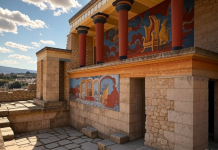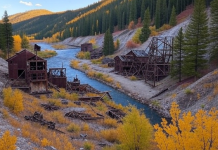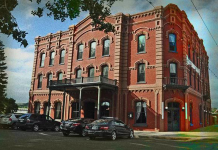The Granaries of Lindoso, known locally as espigueiros (or canastros), are a remarkable collection of traditional elevated stone storage structures in northern Portugal. These granaries were historically used to store corn and other grains, protecting them from moisture, rodents, and theft by raising them on pillars above the ground.
Location
Lindoso is a small village situated within Peneda-Gerês National Park, near the border with Spain in the Viana do Castelo district. The granaries are clustered in an open area adjacent to the medieval Castle of Lindoso, which offers panoramic views of the site and surrounding landscapes. This strategic positioning not only aids in ventilation but also historically facilitated surveillance. The area is a popular spot for visitors, with the castle itself accessible for a small fee for enhanced viewpoints.
History
The oldest granaries in Lindoso date back to the 17th century, with many constructed during the 18th and 19th centuries. Contrary to some portrayals as communal assets, they were privately owned and sized according to each family’s agricultural holdings. During periods of food scarcity, they were frequent targets for theft, leading to organized surveillance systems involving local authorities, police rotations, and even vineyard owners. This practice underscored social tensions, including distrust between wealthier and poorer residents, and only faded as economic conditions improved and hunger became less prevalent. Today, the site preserves around 50 of these structures, serving as a testament to rural Portuguese heritage.
Architecture
These elongated, rectangular granaries are built primarily from local granite, featuring slatted sides for air circulation and mushroom-shaped stone pillars (often topped with discs to deter rodents). The roofs are typically tiled, and the overall design is simple yet functional, blending seamlessly with the rugged terrain. Each granary’s style could historically indicate its owner’s household, though inheritances and divisions have made this less straightforward over time. Similar designs can be found in nearby villages like Soajo and Cidadelhe, but Lindoso boasts one of the largest and best-preserved groupings.
Significance
The granaries represent Portugal’s agricultural past and the ingenuity of rural communities in adapting to environmental challenges. They highlight themes of self-sufficiency, social inequality, and evolving community dynamics — debunking myths of them as purely communal symbols. As a cultural landmark, they draw tourists interested in history, architecture, and nature, often visited alongside the castle for family outings or photography amid scenic hills. The site is free to explore outdoors, making it an accessible piece of living heritage in a national park setting.






